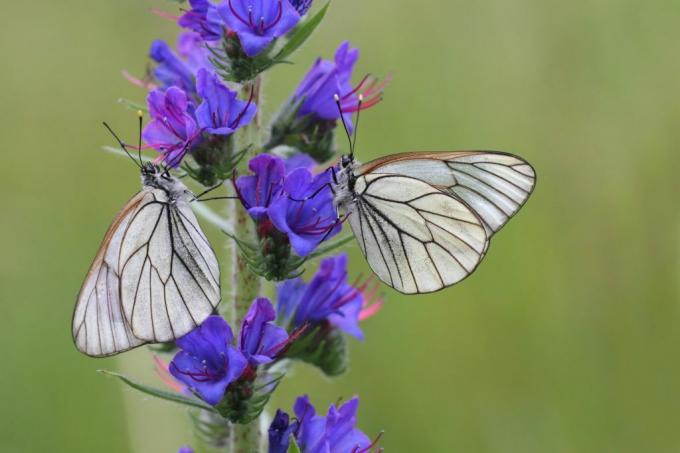The soft pink and deep blue of the adder's head brings fresh color to the garden. Find out here how you can use it to enchant your garden and numerous insects.

There are fewer and fewer insects in Europe, so it is high time to do something now. The garden is an effective place for this, and the common adder's head (Echium vulgare) Exactly the right partner: handsome, easy to care for, local and extremely popular with all kinds of insects.
contents
- Origin and characteristics of the common adder's head
- Plant and care for the common adder head
- The common adder head as an insect magnet
Origin and characteristics of the common adder's head
The common or blue adder head is one of our native wild plants. Its distribution area extends from Europe to western Asia. It is also widespread in Germany. You can easily recognize the plant by its striking blue flowers. While they are in bloom they are still pink, but gradually turn into a deep blue. The stamens and styles protrude from the flowers excessively long. With a flowering time from May to October, the biennial plants delight not only garden owners, but also numerous insects. The leaves of the plant are deep green and narrowly lanceolate. Since the plant belongs to the predatory family (
Boraginaceae) heard, it is densely covered with bristles. The green stem is often covered with red dots.
Plant and care for the common adder head
The common adder's head feels particularly comfortable in warm, sunny and dry locations. It can often be found in the wild on railway embankments or on other dry ruderal areas. Plant the adder head preferably on sandy, stony or gravel areas in a sun-exposed location. The plant rarely gets too dry. You should water the first time after setting or sowing. The easiest way to do this is to sow the common adder's head. Since the plant is extremely robust, this usually works without any problems. In the first year only a rosette of leaves forms. Only in the second year does the plant develop shoots with flowers.

You don't need to look after the common adder's head. He likes it dry and low in nutrients anyway. And even a cold winter is no problem for the plant, because then it pulls back into its deep taproot. The plant then dies after two years. If you want the plant to seed itself, then you should leave the flower stalks standing after they have withered. Otherwise you should of course remove it before sowing.
The common adder head as an insect magnet
As a native wild plant, the common adder's head has a lot to offer insects. Its long flowering period from May to October attracts numerous visitors and the high sugar content in the nectar rewards them richly. There were at least twenty different ones on Adderhead Butterfly species proven. Including some thick-headed butterflies (Thymelicus) and the magnificent swallowtail (Papilio machaon). But also Hoverflies, Bees and wild bees, the adder's head flowers provide a valuable source of food. Two native wild bee species even specialize in this plant.

The Adderhead Mason Bee (Osmia adunca) and the rock adder head bee (Osmia anthocopoides) can only occur where the adder's head also grows. The common adder head is therefore predestined for insect friendly gardens, Flowering meadows and Bee pastures.
Tip: Of the Plantura butterfly meeting contains various types of butterfly-friendly plants. This is how butterflies and caterpillars find food for months.
